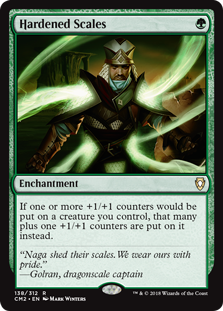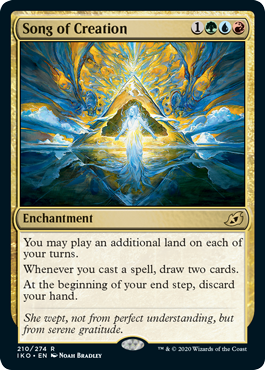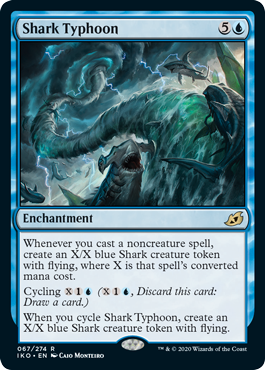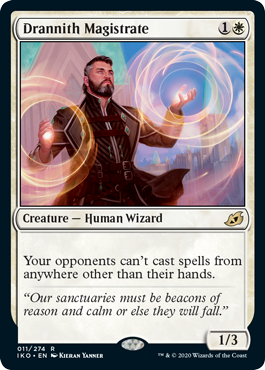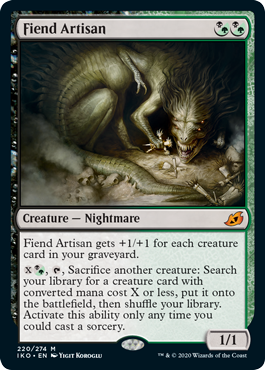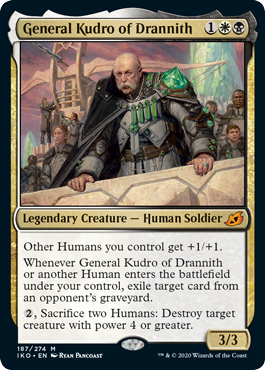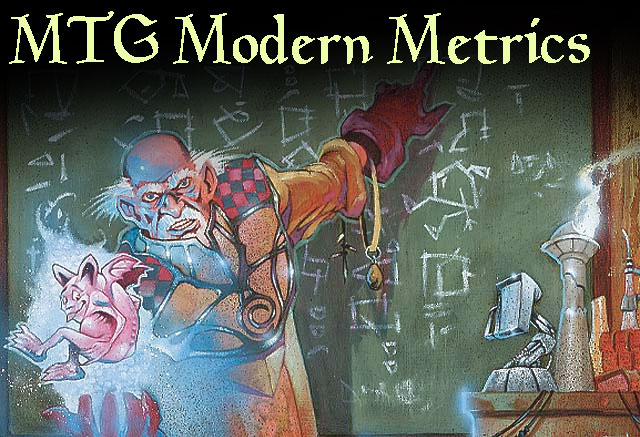I took a Week 4 blogging hiatus but continued to track format changes past our Week 3 article. Good news: Wizards finally acknowledged the companion problem in Ian Duke’s May 18, 2020 Banned and Restricted update. Duke even included a broader statement about multi-format companion impact, which we’ll unpack later today. Bad news: companion dominance got worse. Lurrus, Yorion, and the rest of the Ikoria Pokesquad have completely taken over Modern as the format collapses around a few top-tier decks. Burn and Prowess continued to exceed URx Delver shares at the height of the Treasure Cruise reign. The online Modern community is in peak outrage over companions specifically and format management generally: 17 of the top 20 Modern subreddit posts from the last month are criticizing Wizards, blasting companion, or lamenting Modern’s decline. There’s even a community of players who have lost so much confidence in Wizards they’ve taken format management into their own hands. I’m sensing the same despair and rage I wrote about in my inaugural 2020 article, “Fixing Modern: Redefining Format Mission,” which Wizards still has not addressed. All of this makes me fearful for Modern’s direction and future, but for now, we need to resolve the immediate companion crisis.
Today’s metagame breakdown updates the statistics from Week 1, Week 2, and Week 3. We’ll look at top-tier decks, companion prevalence, and changes from Week 3 to Week 5. I’ll then explore Wizards’ acknowledgement of the companion problem, and offer banlist and mechanical solutions Wizards can employ to fix this mess. Like most readers, I’m exhausted from constantly identifying and discussing major Modern problems. I just want to write about fun decks and play a fun format again. But until we pressure Wizards into decisive action on these formative problems, we’re not going to enjoy Modern the way we once did. This requires clear data to inform our conversation and clear conclusions based on that data.
Post-IKO Modern Weeks 4-5
One advantage of taking a Week 4 break was having an opportunity to absorb more Modern content. For instance, my former Modern Nexus colleague, David Ernenwein, wrote his own thorough metagame update the other week. I enjoyed reading his analysis and methods, although I disagreed with some of his conclusions (Lurrus, even downtrending to the mid-40% range, is still massively problematic) and presentation (“Other” decks should never be listed first on any metagame breakdown above a most-played Tier 1 deck). As today’s update will show, unlike Ernenwein, I identify an acute problem with Lurrus specifically and companions broadly, a metagame no longer trending towards diversity, and a format in deep trouble.
Metagame Breakdown
Our Magic: The Gathering Online dataset is now up to a respectable 38 events and 928 datapoints since April. Preliminaries continue to overlap with Challenges, Super Qualifiers, and other premier MTGO events, so I’m going to keep including them in the dataset to guarantee a larger sample. As always, curated Leagues are not included, and our ▲ and ▼ indicators show percentage changes from Week 3 into the end of Week 5. This week’s Tier 1 cutoff is 4%.
Post-IKO Modern Metagame: 04/18 – 05/24/2020 (n=928)
- Prowess: 11.4% (106) ▲3.7%
- Burn: 8.6% (80) ▼-2.1%
- Jund: 7.9% (73) ▲0.5%
- Amulet Titan: 4.6% (43) ▼-0.7%
- Ponza: 4.6% (43) ▲0.3%
- Devoted Devastation: 4.4% (41) ▼-0.7%
- Eldrazi Tron: 4% (37) ▲1.4%
- Temur Urza: 3.4% (32) ▼-1.1%
- Bant Snow Control: 3.2% (30) ▼-1.3%
- Humans: 3.1% (29) ▼-0.9%
- Hardened Scales: 2.8% (26) ▼-0.6%
- Ad Nauseam: 2.7% (25) -0%
- Bogles: 2.4% (22) ▲1.1%
- Mono G Tron: 2.3% (21) ▲1%
- Scapeshift: 1.7% (16) ▲1.4%
- The Rock: 1.7% (16) ▼-0.2%
- 5C Niv: 1.6% (15) ▲0.1%
- Azorius Control: 1.6% (15) ▲1.1%
- Dredge: 1.5% (14) -0%
- 4C Uro Snow Control: 1.4% (13) ▼-0.1%
- Grixis Delver: 1.4% (13) ▼-0.5%
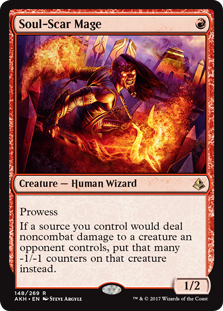 Let’s talk red decks. Prowess has been rising for the past few weeks with Burn on the decline. Specifically, we’re seeing a sharp increase in RBx Prowess, which pairs discard spells and Cling to Dust with traditional Prowess staples like Dart, Swiftspear, Manamorphose, Bauble, etc. I’ve seen scattered debate around whether or not these RBx Prowess upstarts are distinct from traditional Mono R or Boros builds, and by extension, if all of those are separate from Burn. We could theoretically unpack that macro “Prowess” category into at least 2-3 other sub-Prowess builds, which would paint a more positive top-tier picture where no single deck has a 10%+ share. We could also pretend Burn and Prowess are different when assessing format health.
Let’s talk red decks. Prowess has been rising for the past few weeks with Burn on the decline. Specifically, we’re seeing a sharp increase in RBx Prowess, which pairs discard spells and Cling to Dust with traditional Prowess staples like Dart, Swiftspear, Manamorphose, Bauble, etc. I’ve seen scattered debate around whether or not these RBx Prowess upstarts are distinct from traditional Mono R or Boros builds, and by extension, if all of those are separate from Burn. We could theoretically unpack that macro “Prowess” category into at least 2-3 other sub-Prowess builds, which would paint a more positive top-tier picture where no single deck has a 10%+ share. We could also pretend Burn and Prowess are different when assessing format health.
I’m not buying any of that. Today’s Prowess flavors today are no more distinct than 2016’s Eldrazi. Fun fact: colorless, Azorius, and Izzet variants of Eldrazi still had between 30% and 50% of their slots vary from deck to deck. That’s less overlap than 2015’s Grixis Control and Grixis Twin (sharing about 66% of slots). And yet, despite Eldrazi lists sharing no more than half of their cards, these were clearly the “same deck” from a health and gameplay perspective. Rx Aggro presents a similar scenario today, constituting a profoundly unhealthy macro archetype. As I said in Week 3, there’s no appreciable difference between dying on turn four to Guides, Eidolons, and Boros Charms vs. Swiftspears, Mages, and Lava Darts. Or getting buried on turn six to all of that plus Lurrus and Bauble recursion. This Rx experience is at a distressing 20% of the format, worse than Treasure Cruise URx Delver variants at 17.5% in late 2014. Taken in context, the Rx rampage has elevated from an orange flag to a literal red flag. I struggle to remember any healthy Modern metagame where a macro-category like Rx Aggro had an upward-trending share around 20% (see the metagames of BGx Deathrite, URx Delver, Eldrazi, or most controversially, URx Twin) and that hasn’t changed in 2020.
 Looking beyond the Rx takeover, we see other widening metagame cracks. Every top-tier Lurrus deck except Jund, Burn, and Prowess is down (poor Grixis Delver has been floundering ever since it appeared), defeating our cautious hopes that Lurrus could eningeer a midrange renaissance. Eldrazi and Gx Tron are lumbering back to the top, and Ponza is climbing with them to exploit big mana weaknesses. Meanwhile, grindy Astrolabe decks are declining (Temur Urza and Bant-X Uro Snow both down by over a perventage point) replaced by Yorion-powered combo kills in 80 card Astrolabe Scapeshift. At least Bogles is capitalizing on Rx’s rise, jumping 1.1% but not exactly contributing to the most enticing Modern gameplay. The only positive sign of format adaption is old-school Azorius Control peeking out of Tier 3 irrelevance into the big leagues. Thank Kaheera, the Orphanguard (in 73% of Azorius decks) for giving the control deck some direction.
Looking beyond the Rx takeover, we see other widening metagame cracks. Every top-tier Lurrus deck except Jund, Burn, and Prowess is down (poor Grixis Delver has been floundering ever since it appeared), defeating our cautious hopes that Lurrus could eningeer a midrange renaissance. Eldrazi and Gx Tron are lumbering back to the top, and Ponza is climbing with them to exploit big mana weaknesses. Meanwhile, grindy Astrolabe decks are declining (Temur Urza and Bant-X Uro Snow both down by over a perventage point) replaced by Yorion-powered combo kills in 80 card Astrolabe Scapeshift. At least Bogles is capitalizing on Rx’s rise, jumping 1.1% but not exactly contributing to the most enticing Modern gameplay. The only positive sign of format adaption is old-school Azorius Control peeking out of Tier 3 irrelevance into the big leagues. Thank Kaheera, the Orphanguard (in 73% of Azorius decks) for giving the control deck some direction.
The archetype breakdown captures all these worrisome developments from a bird’s eye sky noodle’s view:
- Aggro: 32.8% (304) ▲.2%
- Midrange: 23.6% (AA 61 + 158) ▼1.2%
- Combo: 15.8% (AA 23 + 124) ▲.6%
- Big mana: 15% (139) ▲1.7%
- Control: 11.2% (AA 75 + 29) ▼.6%
- Tempo: 1.6% (15) ▼.8%
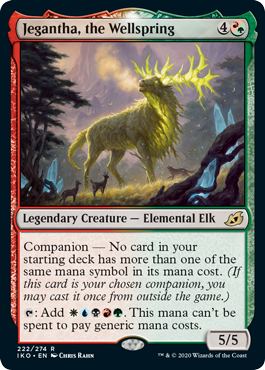 Aggro, combo, and big mana are up, midrange, control, and tempo are down. This is a bad look for a format often accused of promoting goldfish-style Magic. Big mana’s continued rise remains unsurprising. As I predicted in basically every metagame update since Week 1, the companion hype died down and players inevitably returned to mainstays Eldrazi and Gx Tron. Except some of those Tron lists, particularly the 1% of players on Gruul Tron, have even upgraded to better support Jegantha. The midrange decline is even more worrisome than big mana’s ascent. I was initially hopeful Lurrus would create grindier games of Magic and incentivize midrange and control players to adopt the Cat into their lagging UBx control, Death’s Shadow, and similar strategies. My Week 1 hopes have imploded as Lurrus just keeps edging towards an increasingly unhealthy and linear metagame. Even grindmaster Yorion is having a similar effect, with the more interactive Bant-plus and Urza decks both declining in favor of a Scapeshift combo kill.
Aggro, combo, and big mana are up, midrange, control, and tempo are down. This is a bad look for a format often accused of promoting goldfish-style Magic. Big mana’s continued rise remains unsurprising. As I predicted in basically every metagame update since Week 1, the companion hype died down and players inevitably returned to mainstays Eldrazi and Gx Tron. Except some of those Tron lists, particularly the 1% of players on Gruul Tron, have even upgraded to better support Jegantha. The midrange decline is even more worrisome than big mana’s ascent. I was initially hopeful Lurrus would create grindier games of Magic and incentivize midrange and control players to adopt the Cat into their lagging UBx control, Death’s Shadow, and similar strategies. My Week 1 hopes have imploded as Lurrus just keeps edging towards an increasingly unhealthy and linear metagame. Even grindmaster Yorion is having a similar effect, with the more interactive Bant-plus and Urza decks both declining in favor of a Scapeshift combo kill.
There aren’t a lot of positive metagame takeaways outside of snowless Azorius Control making a quiet entry into the top 20. Midrange and control keep trending down, aggro and big mana keep trending up or reinforcing already high shares. Our previous picture of “relative diversity” is suffocating under the weight of less interactive play patterns, repetitive games, and a mechanic that will likely go down in history as one of contemporary Magic’s most egregious and baffling design mistakes.
Companion breakdown
If the metagame picture is bad, the companion picture is worse. We’ve reached a point in Modern where you are either playing companions, a Titan strategy, or a Tron strategy. You can try and abuse metagame gaps with screwballs like Ad Nauseam, Dredge, or Azorius Kaheera Control, but you’re probably playing a worse version of the omnipresent companion decks. The Week 5 companion table really underscores this problem, with sizable jumps in virtually all categories.
| Companions | Meta % | Top-Tier % | T8 % |
| Lurrus | 46.3% (430) ▲.9% | 49.6% (364) ▲.7% | 48.8% (78) ▼.3% |
| Yorion | 11.1% (103) ▲1.2% | 11.2% (82) ▲1.2% | 13.8% (22) ▲3.1% |
| Jegantha | 4.3% (40) ▲1.6% | 3.4% (25) ▲.8% | 4.4% (7) ▲.6% |
| Zirda | 1.1% (10) | 0.1% (1) | 0% (0) |
| Obosh | 4.1% (38) ▲.4% | 5% (37) ▲.8% | 3.1% (5) ▲1.2% |
| Gyruda | 0.4% (4) | 0% (0) | 0% (0) |
| Lutri | 0.1% (1) | 0% (0) | 0% (0) |
| Umori | 0.1% (1) | 0% (0) | 0% (0) |
| Kaheera | 0.8% (7) | 0% (0) | 0.6% (1) |
| ALL COMPS | 68.3% (634) ▲4.6% | 70.3% (509) ▲4.1% | 70.6% (113) ▲4.5% |
 2020’s companion coup continues to surpass even the most pessimistic expectations. 70% (!?) of top-tier decks and Top 8 decks are running companions. 50% of top-tier decks are Lurrus decks alone. We had a 05/16 Challenge where all but four decks ran companions and half of those companions were Lurrus. Remember from Week 3’s article that Once Upon a Time, Oko, Dig Through Time and Treasure Cruise combined, and Eye of Ugin never exceeded about a 44% format share. Lurrus at 50% and partner in crime Mishra’s Bauble at around 45% are committing historic diversity violations, to say nothing of Obosh, Yorion, Kaheera, and Jegs being virtually mandatory for the non-Lurrus half of the format. Even worse, all of these measures continue to trend up from week to week, with the Weeks 4-5 jump representing the most alarming increase so far. Week 1 had “only” 57% of all decks using a companion. Now that’s up to 68.3% and even higher for tiered decks. Lurrus has been hovering around 50% saturation since Week 1 and sees no sign of dipping anywhere below 45%, which would still beat the combined TC plus DTT share.
2020’s companion coup continues to surpass even the most pessimistic expectations. 70% (!?) of top-tier decks and Top 8 decks are running companions. 50% of top-tier decks are Lurrus decks alone. We had a 05/16 Challenge where all but four decks ran companions and half of those companions were Lurrus. Remember from Week 3’s article that Once Upon a Time, Oko, Dig Through Time and Treasure Cruise combined, and Eye of Ugin never exceeded about a 44% format share. Lurrus at 50% and partner in crime Mishra’s Bauble at around 45% are committing historic diversity violations, to say nothing of Obosh, Yorion, Kaheera, and Jegs being virtually mandatory for the non-Lurrus half of the format. Even worse, all of these measures continue to trend up from week to week, with the Weeks 4-5 jump representing the most alarming increase so far. Week 1 had “only” 57% of all decks using a companion. Now that’s up to 68.3% and even higher for tiered decks. Lurrus has been hovering around 50% saturation since Week 1 and sees no sign of dipping anywhere below 45%, which would still beat the combined TC plus DTT share.
As with the metagame breakdown, I don’t have many positive conclusions to share. I had this conversation with some Modern colleagues on a discussion board, and it’s on my mind today. It’s tempting for data-driven authors to be nuanced and even-handed for the sake of appearances alone. Readers count on us to take that middle ground. I’m all for level-headed cautions and disclaimers, but sometimes we just need to call a spade a spade. Or call a Nightmare a nightmare. Equivocation for the sake of equivocation isn’t helpful, and it would be disingenuous to analyze this collapsed metagame and declare it anything other than a mess. Lurrus and companions are crushing even the rosiest interpretations of the format. For every positive observation (e.g. only 41% of Humans decks experiment with Jegantha despite fears the Elk would be a mandatory Gurmag Angler), there are many more negative ones (e.g. four of the seven Tier 1 decks are Lurrus decks. The remaining two are big mana decks or big mana slayer Ponza).
All of this forces us and Wizards to stop assessing the damage and start making repairs. Between the high-level metagame factors and gossip from the ground (Sanchez’s six Prowess mirrors into a Challenge Top 8 with three Prowess and one Burn), we need to switch gears from diagnosing the problem to identifying solutions.
Taking Aim at Lurrus and Companions
It’s been a relatively dismal two weeks of Magic content, with what feels like endless Wizards missteps and player outcry from even the game’s most loyal supporters. Thankfully, Wizards shined a rare ray of hope through this storm in its May 18 B&R update. The most obvious takeaways were Lurrus’s and Zirda’s exit from Legacy and Vintage. Also, removing obnoxious Winona and Magistrate from Arena. Add all four of these to the blossoming list of multi-format bans we’re going to see throughout 2020, but refocus your attention to the B&R’s last two paragraphs. Today, I’m going to do a close reading of this official acknowledgement as a jumpoff point to discuss potential solutions to the companion crisis.
Unpacking the official companion stance
Hats off to Ian Duke for having the courage to acknowledge companions as a growing, multi-format threat. We shouldn’t have to praise Wizards employees for transparent communication around obvious issues, but that yawning communication gap is a topic for another day. For now, let’s just focus on Duke’s and R&D’s stance on companions. I’m pasting his entire statement in segments for clearer breakdown (emphases added) with commentary:
While this set of changes has focused on Legacy, Vintage, and Brawl, we’re continuing to watch the evolution of the metagame in each other format, including Standard, Pioneer, and Modern. If changes become needed in other formats, we’ll provide those separately in a future announcement. As of now, we’re seeing a diverse and dynamic metagame that changes from week to week in each Standard, Pioneer, and Modern.
Duke starts with a basic acknowledgement of R&D monitoring other formats (i.e. Standard, Pioneer, and Modern). Longtime Moderners know this concession is rare, with Wizards often including no context beyond “No changes.” The existence of these pargraphs alone shows Wizards is having serious conversations about the problem. That said, as of Duke’s publication date, Wizards judged those formats to feature “diverse and dynamic metagame[s]” which did not require bans. I understand this stance and shared it for a few weeks. Data was less clear and less plentiful. We were seeing some exciting Lurrus decks (Grixis Delver, The Rock, 4C Control) competing alongside more tuned options (Burn, Prowess, Jund). We were enjoying widespread experimentation with other companions and cautious optimism. But as we’ve seen from Week 3 to Week 5 in today’s article, the format is rapidly veering off that course in the exact ways Wizards feared.
Before determining whether any changes are necessary, and what the right changes would be, we need to see the metagame come closer to an equilibrium state. Currently, these formats are shifting too quickly for data to indicate what, if any, card or archetype poses a problem.
 The first bolded bit underscores my interpretation above. Wizards wants formats to settle into an equilibrium, or approach such a state, prior to action. Having analyzed the format for five weeks now, I understand their initial hesitation and also encourage them to admit the format has now reached this state. Bridge from Below and Hogaak saw decisive action on comparable timelines (particularly Bridge in the barely one month between Modern Horizons’ legalization and Bridge’s ban), and Modern is in worse shape today. As for the second bolded bit, I’m calling shenanigans. Wizards couldn’t identify a single “card” as the main problem? Lurrus was a visible orange flag within an hour of its preview, a budding problem as early as Week 0, and a historic violator by the end of Week 1. We’re over a month past IKO‘s release and it’s maintaining a +/- 50% share. Companions have also stabilized at the 70% level as the format slips further towards a big mana and aggro plurality. We might not be at the true equilibrium state, but it’s clear where Lurrus and Modern are now and will keep heading into June.
The first bolded bit underscores my interpretation above. Wizards wants formats to settle into an equilibrium, or approach such a state, prior to action. Having analyzed the format for five weeks now, I understand their initial hesitation and also encourage them to admit the format has now reached this state. Bridge from Below and Hogaak saw decisive action on comparable timelines (particularly Bridge in the barely one month between Modern Horizons’ legalization and Bridge’s ban), and Modern is in worse shape today. As for the second bolded bit, I’m calling shenanigans. Wizards couldn’t identify a single “card” as the main problem? Lurrus was a visible orange flag within an hour of its preview, a budding problem as early as Week 0, and a historic violator by the end of Week 1. We’re over a month past IKO‘s release and it’s maintaining a +/- 50% share. Companions have also stabilized at the 70% level as the format slips further towards a big mana and aggro plurality. We might not be at the true equilibrium state, but it’s clear where Lurrus and Modern are now and will keep heading into June.
We are aware of some players’ concerns about the frequency at which they encounter decks using companions across several formats. While we’re not currently seeing problematic win rates in Standard, Pioneer, or Modern from decks using companions, we are looking at overall metagame share and potential for repetitive gameplay.
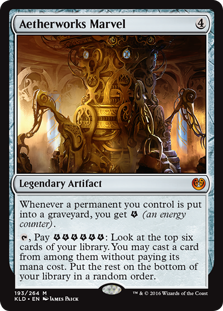 On the one hand, I agree win rates must be considered in banlist decisions. R&D has been better at promoting data-driven articles and decisions from 2017 through present and it’s good Wizards appreciates this gold standard of data. On the other hand, Wizards correctly identifies win rates alone do not determine bans. This is the exact consideration that led to Aetherworks Marvel’s and Lattice’s banning in their respective formats. Or even Once Upon a Time more recently (prevalence and win rates were responsible). Metagame share and repetitive gameplay are important R&D considerations. Lurrus plus companions as a whole are undoubtedly violating both criteria through the end of Week 5, whether by numbers (Rx should never sustain 20% of the format) or anecdotal experiences. This should push Wizards to actions less palatable in previous weeks.
On the one hand, I agree win rates must be considered in banlist decisions. R&D has been better at promoting data-driven articles and decisions from 2017 through present and it’s good Wizards appreciates this gold standard of data. On the other hand, Wizards correctly identifies win rates alone do not determine bans. This is the exact consideration that led to Aetherworks Marvel’s and Lattice’s banning in their respective formats. Or even Once Upon a Time more recently (prevalence and win rates were responsible). Metagame share and repetitive gameplay are important R&D considerations. Lurrus plus companions as a whole are undoubtedly violating both criteria through the end of Week 5, whether by numbers (Rx should never sustain 20% of the format) or anecdotal experiences. This should push Wizards to actions less palatable in previous weeks.
If we see signs of long-term health issues resulting from high metagame share of companion decks, we’re willing to take steps up to or including changing how the companion mechanic works. For now, metagames need more time to evolve before we can determine whether changes are necessary.
This was by far my biggest takeaway from Duke’s article. Duke not only signaled Wizards’ awareness of the exploding companion issue, he also tipped the company’s hand at an unprecedented solution: changing the mechanic itself. Magic players across the content-sphere had been speculating on this possibility for weeks before Duke’s article, and his official position lends credibility to this approach. The fact Wizards mentioned it at all should encourage us to speculate on these potential changes.
For any Wizards staffers reading my article today, please reconsider your May 18 stance. The Modern metagame is flattening towards an equilibrium where Lurrus, companions, and ramp rule the roost. I understand the desire to preserve an exciting mechanic, maintain product viability, and allow formats time to organically adapt to issues, but we are past that point. Modern requires action that balances damage to the format against reduced sales and destabilized player confidence; hopefully some suggested solutions below will fulfill those demands. As for readers more generally, please spread this message and demand action from Wizards. Wizards does listen, even if their representatives can be puzzlingly silent, and we need them to know the Modern status quo is untenable.
Banlist solutions
I’m keen on mechanical solutions to companion, but also acknowledge the banlist as a viable management tool. Until Wizards addresses some fundamental issues in their set design and playtesting processes, bans are going to remain an inescapable part of the 2020 and beyond Magic experience. As yet another disclaimer, I acknowledge other Modern suspects might require close R&D scrutiny: see Astrolabe, Veil, and others on the Modern community hitlist. Today, however, we need to table those discussions until Wizards has tamed Lurrus and company. Here are some of the likeliest banlist responses, starting with the trap solution everyone is worried about:
NOT a Solution: Ban Mishra’s Bauble
 This is a scary possibility I don’t want to even acknowledge. Unfortunately, Wizards has a alarming track record of banning an older card when a new release creates a busted synergy. See Opal (with Urza) and Lattice (Karn) this year, Bridge (Hogaak), Looting (Hogaak, Phoenix), and KCI (Trawler) last year, and many more before that. In these cases, Wizards hit the old card instead of the new enabler: pre-2018 examples include Electromancer breaking Storm but Song taking the hit, and Oath Eldrazi or SOI block graveyard cards busting their respective decks prior to Eye/GGT getting hammered. Wizards does ban newer cards (Oko, Hogaak, Once Upon a Time, or TC/DTT before), but even there we sometimes see an older card take the initial fall as in Bridge from Below. Wizards also has a record of hitting free or zero-mana effects and indicting cards that reduce variance (cantrips across all formats including Probe, OUaT, and P&P in Modern). All of this suggests Wizards could conceivably terminate Bauble instead of Lurrus, especially to deflect responsibility from their busted packseller to the Coldsnap old-timer.
This is a scary possibility I don’t want to even acknowledge. Unfortunately, Wizards has a alarming track record of banning an older card when a new release creates a busted synergy. See Opal (with Urza) and Lattice (Karn) this year, Bridge (Hogaak), Looting (Hogaak, Phoenix), and KCI (Trawler) last year, and many more before that. In these cases, Wizards hit the old card instead of the new enabler: pre-2018 examples include Electromancer breaking Storm but Song taking the hit, and Oath Eldrazi or SOI block graveyard cards busting their respective decks prior to Eye/GGT getting hammered. Wizards does ban newer cards (Oko, Hogaak, Once Upon a Time, or TC/DTT before), but even there we sometimes see an older card take the initial fall as in Bridge from Below. Wizards also has a record of hitting free or zero-mana effects and indicting cards that reduce variance (cantrips across all formats including Probe, OUaT, and P&P in Modern). All of this suggests Wizards could conceivably terminate Bauble instead of Lurrus, especially to deflect responsibility from their busted packseller to the Coldsnap old-timer.
This bad ban would not solve any fundamental companion problems. We’d still see unprecedented Lurrus saturation as players swapped Bauble with other free or even 1 CMC cantripping effects (Conjurer’s Bauble and Unbridled Growth are possible candidates). Lurrus is good enough on its own with all the other low-cost permanents; indeed, decks like Devoted Devastation don’t even run Bauble! That brings us to a Bridge 2.0 scenario where Lurrus decks evolve beyond a glancing ban and then get banned anyway. We must discourage Wizards from this disastrous approach.
(Real) Solution #1: Ban Lurrus
 No surprises here. If Wizards does not change the mechanic, they at least need to ban Lurrus. The Cat has committed at least three bannable offenses in Modern, any one of which might not be damning, but all three of which are unacceptable. It has unprecedented Modern prevalence in excess of virtually every other card on the format’s banlist. That might be okay if we were entertaining a Legacy Brainstorm scenario, but Lurrus does not promote the same kind of high-skill, distinctive gameplay the venerable cantrip encourages. Instead, Lurrus pushes a metagame where Rx Aggro is 20% and all other non-Jund Lurrus strategies are on the downswing. Add repetitive gameplay due to Lurrus being “drawn” in every starting hand and its mechanical break of being a virtual 0-for-2 in most exchanges, and you have a singular design blunder to cap off a 2019 and 2020 season of offenses. This is exactly what bans are intended to address and if Wizards can’t fix the mechanic, Lurrus must go. This is too bad because I actually think maindeck Lurrus is an interesting choice that may promote some slower, interactive gameplay, but if Wizards won’t change the mechanic then maindeck Lurrus is a necessary casualty.
No surprises here. If Wizards does not change the mechanic, they at least need to ban Lurrus. The Cat has committed at least three bannable offenses in Modern, any one of which might not be damning, but all three of which are unacceptable. It has unprecedented Modern prevalence in excess of virtually every other card on the format’s banlist. That might be okay if we were entertaining a Legacy Brainstorm scenario, but Lurrus does not promote the same kind of high-skill, distinctive gameplay the venerable cantrip encourages. Instead, Lurrus pushes a metagame where Rx Aggro is 20% and all other non-Jund Lurrus strategies are on the downswing. Add repetitive gameplay due to Lurrus being “drawn” in every starting hand and its mechanical break of being a virtual 0-for-2 in most exchanges, and you have a singular design blunder to cap off a 2019 and 2020 season of offenses. This is exactly what bans are intended to address and if Wizards can’t fix the mechanic, Lurrus must go. This is too bad because I actually think maindeck Lurrus is an interesting choice that may promote some slower, interactive gameplay, but if Wizards won’t change the mechanic then maindeck Lurrus is a necessary casualty.
Solution #2: Ban Lurrus and Yorion
 Lurrus feels like an inevitable ban in these models, but I actually think Wizards also needs to hit Yorion. Failure to do so will create a Modern where Yorion supplants Lurrus as the companion of choice, pushing into similar 40%+ territory over the summer. We already saw Bant Snow and Temur Urza decks leading the pre-IKO format, and with Lurrus gone, we would likely return to that Week 0 metagame with Yorion at the helm. This may result in a more interactive and grindy Modern revolving around Yorion value instead of Lurrus blitzes, but it would still suffer from similar prevalence issues. Wizards has a history of banning both the obvious problem and the natural successor (e.g. TC and DTT, Hogaak and Looting, Oko and Opal, etc.), and I’d be surprised if they didn’t take similar action here. This could also take the form of some kind of heavyhanded Astrolabe ban (and/or Bauble if Wizards really goes bananas), but that seems a lot less likely than just the companions.
Lurrus feels like an inevitable ban in these models, but I actually think Wizards also needs to hit Yorion. Failure to do so will create a Modern where Yorion supplants Lurrus as the companion of choice, pushing into similar 40%+ territory over the summer. We already saw Bant Snow and Temur Urza decks leading the pre-IKO format, and with Lurrus gone, we would likely return to that Week 0 metagame with Yorion at the helm. This may result in a more interactive and grindy Modern revolving around Yorion value instead of Lurrus blitzes, but it would still suffer from similar prevalence issues. Wizards has a history of banning both the obvious problem and the natural successor (e.g. TC and DTT, Hogaak and Looting, Oko and Opal, etc.), and I’d be surprised if they didn’t take similar action here. This could also take the form of some kind of heavyhanded Astrolabe ban (and/or Bauble if Wizards really goes bananas), but that seems a lot less likely than just the companions.
Solution #3: Ban Lurrus and/or Yorion alongside a mechanical change
Kill it with fire! In this truly nuclear scenario, Wizards both enacts a sweeping companion change (see next section) and then bans either Lurrus and/or Yorion just to be safe. Even if you added Lurrus to your hand before the game started as a 7th card (drawing one less card to begin with or scrying one to the bottom), that inherent consistency boost of always having your Lurrus would still result in dominance issues. RBx Prowess and Jund are already outfitted for this change with ample discard spells in the maindeck to bin opposing companions. If Wizards changes the mechanic and bans its two worst offenders, however, R&D could allow the more offbeat companions to flourish (get ’em, Lutri) without risking future bans or rules changes in 1-2 months.
I still think pure ban approaches are less likely than mechanical ones. Banning your iconic IKO cards before we’ve been playing the cards in paper (thanks, COVID-19) is a risky economic proposition for a company that needs to generate sales. Mechanical changes might allow the cards to work as intended.
Mechanical solutions
Disclaimer: I have no background in game design and acknowledge there are more qualified experts to discuss companion changes. I’ve also struggled to keep up with the sheer volume of companion revision suggestions on Twitter and Reddit, and am happy to give credit where credit is due if anyone can cite some sources for these ideas. I do, however, know Modern and can discuss companion mechanical changes through our format’s lens.
 Before talking companion, it’s important to understand how Wizards can change the mechanic at all without functionally rewriting card text. Indeed, companions have italicized text under the mechanic name which reminds you how the mechanic works. Keyword: “reminds.” This so-called reminder text is not actual game text per the comprehensive rules, specifically 207.2 (“The text box may also contain italicized text that has no game function“) and 207.2a (“Reminder text is italicized text within parentheses that summarizes a rule that applies to that card“). Wizards can change the comprehensive rule entry for companion without resulting in functional changes to the rules printed on the cards themselves. Only the reminder text would be obsolete, but if old-school players can get over the defender keyword materializing on all pre-2004 Wall creatures, we can survive this new change too.
Before talking companion, it’s important to understand how Wizards can change the mechanic at all without functionally rewriting card text. Indeed, companions have italicized text under the mechanic name which reminds you how the mechanic works. Keyword: “reminds.” This so-called reminder text is not actual game text per the comprehensive rules, specifically 207.2 (“The text box may also contain italicized text that has no game function“) and 207.2a (“Reminder text is italicized text within parentheses that summarizes a rule that applies to that card“). Wizards can change the comprehensive rule entry for companion without resulting in functional changes to the rules printed on the cards themselves. Only the reminder text would be obsolete, but if old-school players can get over the defender keyword materializing on all pre-2004 Wall creatures, we can survive this new change too.
Solution #4: Exile a card, cast the companion
In one of the more basic mechanical changes, players would keep companions in their sideboard and just tack on an additional cost of exiling a single card. Exiling that extra card eliminates one of the most troubling “8th card problems” of companion. This change still insulates companions from discard-based interaction but at least makes it harder to cast them from the sideboard. I suspect this change would not significantly impact the prevalence of Lurrus, Yorion, or any of the other top Modern companions, but it would at least increase their opportunity cost.
Solution #5: Draw fewer cards, add companion to hand
The next two solutions actually put the companion in your hand at the start of the game where discard effects can target it. It also addresses the 8th card problem by trading a card in your hand for the companion in your virtual command zone. Solution 6 does so by revealing the least information and giving player the least flexibility. Here, players who announced a companion would draw N-1 cards, where N is 7 minus the number of times mulliganed, and then make mulligan decisions. After making those decisions, they would add the companion. As an example, on the first hand of the game, a Jund player would announce they are playing Lurrus, draw 6 cards, make mulligan decisions, and then add Lurrus to their hand. This would bring it up to a starting 7 cards. If they mulled that 6-carder to 5 and kept, they would still end with a grip of 6 but one would be Lurrus. This allows players to build around a guaranteed companion, but makes your openers worse.
Solution #6: Scry away excess cards, add companion to hand
If Wizards wanted to give players more information when choosing opening hands, they players could draw as normal and then scry one for a companion to replace. Mechanically, players would announce a companion and draw N cards where N is 7 minus the number of times mulligan. They would then make a mulligan decision on that hand and, if satisfied, add the companion before scrying one additional card to the bottom. This gives players more information about what hand they should keep but results in a weird double-scry scenario. For example, consider a Burn player who drew 7 cards and then mulled to 6. They draw 7, scry an excess Eidolon to the bottom, and then add Lurrus to their hand. Now they scry yet another card to the bottom so their final hand size is 6. In theory, Wizards could keep companions pushed by allowing players to keep that companion in their hand without scrying the additional card, but then these players would be starting with literal 8 or 7 cards in hand. That seems like too much even for designers who created companions to begin with, and I doubt it would happen.
Solution #7: Prohibit the mechanic in certain formats
Technically, this is a form of a ban, but it’s still groundbreaking in that you wouldn’t ban any of the cards from maindecks. They’d just be banned as companions, and/or the entire companion mechanic could be barred from a given format. I doubt Wizards would pursue this option because of complexity issues, and because they seem to admit companion is a unique, multi-format problem that demands cross-format solutions. It’s still an option if Wizards doesn’t mind increasing the deckbuilding complexity of older formats while maybe working on mechanical adjustments in Standard.
I’d love to hear other changes by players more familiar with this debate, so throw some my way in the comments or on the various discussion boards we frequent. Overall, this is the direction I think Wizards wants to head, and I would be surprised if a subsequent announcement on companions doesn’t include some kind of mechanical revision.
The State of Constant Crisis
 Beyond Lurrus, I feel like the Modern community and even the Magic community as a whole is just sprinting from fire to fire, trying to call 911 at Wizards while our Washington dispatchers Tweet at us about some cool new product being released in a few months instead of deploying the R&D firefighters. I’ve been zeroed on Lurrus in past weeks, but companions aren’t even close to the the biggest danger to Modern and other nonrotating formats. Those threats are a fundamentally broken design process that is guaranteed to create overpowered, multi-format mistakes, and a disturbing lack of consistent and transparent communication from Wizards’ leadership. I’m hoping Wizards takes actions on the immediate issues of Lurrus and companions so they can shift gears to more publicly and vocally addressing the cracks in the foundation. This will help us recover from our endless crisis states and get back to enjoying the game, especially competitive Constructed players who can’t escape the ceaseless parade of design disasters that have hit Standard (Yorion), Vintage (Lurrus), and everything in between.
Beyond Lurrus, I feel like the Modern community and even the Magic community as a whole is just sprinting from fire to fire, trying to call 911 at Wizards while our Washington dispatchers Tweet at us about some cool new product being released in a few months instead of deploying the R&D firefighters. I’ve been zeroed on Lurrus in past weeks, but companions aren’t even close to the the biggest danger to Modern and other nonrotating formats. Those threats are a fundamentally broken design process that is guaranteed to create overpowered, multi-format mistakes, and a disturbing lack of consistent and transparent communication from Wizards’ leadership. I’m hoping Wizards takes actions on the immediate issues of Lurrus and companions so they can shift gears to more publicly and vocally addressing the cracks in the foundation. This will help us recover from our endless crisis states and get back to enjoying the game, especially competitive Constructed players who can’t escape the ceaseless parade of design disasters that have hit Standard (Yorion), Vintage (Lurrus), and everything in between.
As I’ve Tweeted at Wizards and discussed on social media, Wizards employees love this game and are some of its most tireless advocates. At the same time, new and perilous trends which have many veteran players worried. None of this makes folks like Mark Rosewater or Aaron Forsythe bad people or incompetent. It doesn’t mean Play Design needs to be fired, it doesn’t mean the game is going to die, and it doesn’t mean we’re all not going to load up MTGO or Arena less than 12 hours after quitting. It does, however, signal a potential shift in core elements many of us enjoy about Magic, and it might lead to a less rewarding, complex, and engaging game. We have an obligation to speak out about these issues and encourage Wizards to change course. Today it’s Lurrus in Modern but tomorrow it’s bigger issues like card balance and communication.
Thanks for reading and considering these major issues. Let me know in the comments, on Reddit, on MTG Nexus, or via Twitter if I missed anything or got something wrong. Feedback, criticism, ideas, and thoughts are always welcome. Hopefully we’ll see a true Wizards announcement about an announcement foretelling the doom of Lurrus before my next article hits and until then, stay healthy and stay sane in this increasingly polarized and tumultuous Magic world.







